Top 10 oldest football stadium in the world
Stadiums have always played an important role in sporting events from ancient times to the present. The word “stadium” comes from Greek, meaning a unit of length equivalent to 600 steps, or about 180 meters. Currently, there are many modern stadiums in the world, however, there are still stadiums that were built a long time ago and continue to host major sporting activities and events. Below is a list of the 10 oldest football stadium in the world that Kingsoccertips would like to share, please refer to!
Top 10 the oldest football stadiums in the world
1. Sandygate Road (England – 1804)
Sandygate Road, located in Sheffield, England, is the oldest football stadium in the world, opened in 1804. It serves as the home stadium for Hallam FC, one of the world’s oldest football clubs. This stadium marked the beginning of modern football, hosting the first matches between clubs. Although not large in scale or impressive in design, Sandygate Road carries invaluable historical value, symbolizing the first steps of the king sport. It has witnessed countless matches and become a symbol of football culture in Sheffield.
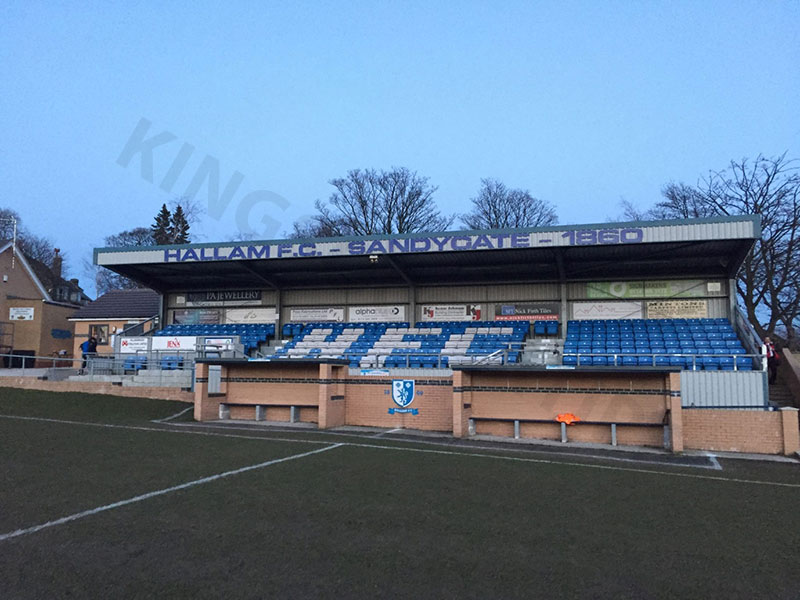
Today, Sandygate Road still maintains its ancient structure with a modest capacity of only a few hundred people, creating a cozy and intimate space. The wooden stands and simple pitch are reminiscent of the time when football had not yet become an industry. This is an ideal destination for those who love to explore the history of football. Anyone who visits this place has the opportunity to relive those first moments, when football was not just a sport but also a passionate passion.
2. Bramall Lane (England – 1855)
Bramall Lane, opened in 1855 in Sheffield, England, is one of the few stadiums in the world that hosts both cricket and football. Originally built for cricket matches, Bramall Lane hosted its first football match in 1862 and gradually transformed into a dedicated stadium for the king of sports. Since 1889, the stadium has been the home ground of Sheffield United, a famous football team in England. With a history spanning nearly two centuries, Bramall Lane is not only a stadium but also a symbol of the development of English football.
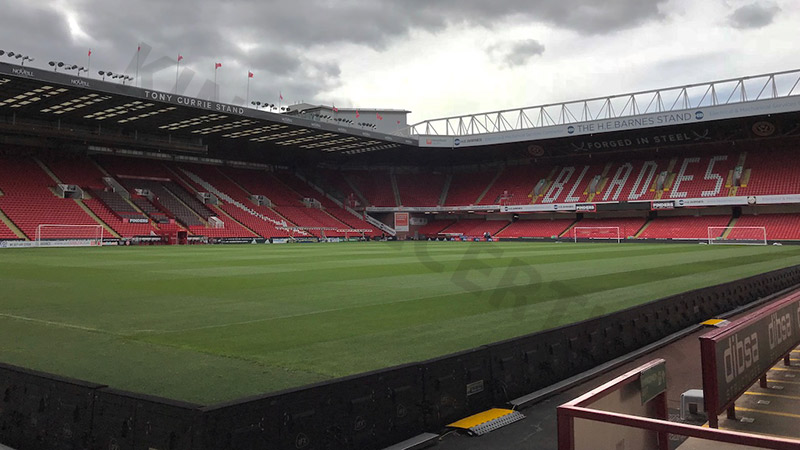
With a current capacity of more than 32,000 people, Bramall Lane has undergone many upgrades and modernizations to meet international standards, while still retaining its traditional features. The stadium is famous for its lively atmosphere, especially during local derbies of Sheffield United. Apart from football, Bramall Lane has also hosted many major sporting events, affirming its important role in the history of British sport. This is an indispensable destination for football and history enthusiasts.
3. Hampden Park (Scotland – 1903)
Hampden Park in Glasgow, Scotland, opened in 1903, is Scotland’s national stadium and one of the oldest football stadiums still in use. The stadium holds a world record for capacity, with over 150,000 people attending a match in 1937, a testament to its influence and historical significance. Hampden Park is not only the home of the Scotland national team, but also hosts national cup finals and other major football events.
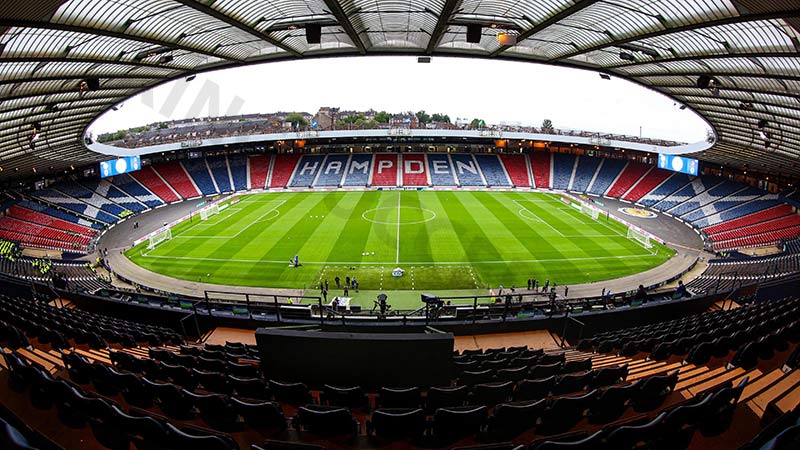
Hampden Park has now been renovated to modern standards with a capacity of around 51,000. The stadium is not just used for football; it also accommodates significant cultural, musical, and sporting events. It is a place that the Scottish people consider part of their national heritage, contributing to honoring the country’s football history. Hampden Park is also remembered for many historic moments, from dramatic matches to top performances by international artists.
4. Anfield (Anh – 1884)
Anfield, located in Liverpool, England, was inaugurated in 1884 and is one of the most famous stadiums in the world. Initially, this stadium was the home ground of Everton, but since 1892, Liverpool FC has used Anfield after an internal dispute. With a history of more than a century, Anfield has not only hosted important matches but also become a symbol of Liverpool football. The song “You’ll Never Walk Alone” resounding from the Kop stands has become a strong inspiration for fans around the world.

With a current capacity of over 53,000 seats, Anfield has undergone many upgrades to meet the growing needs of fans. However, the stadium still retains its traditional features, creating a perfect combination of classic and modern. For Liverpool fans, Anfield is more than just a stadium, it is also a place that has marked memorable historical moments, from dramatic matches in the Champions League to glorious moments in the Premier League.
5. Goodison Park (Anh – 1892)
Goodison Park, opened in 1892, is the home of Everton and one of the oldest stadiums in England. Located in Liverpool, the stadium has a special significance in football history as it was the first stadium built entirely for the sport. Goodison Park has hosted many important events, including the FA Cup Final and England international matches, cementing its historic role in English sport.
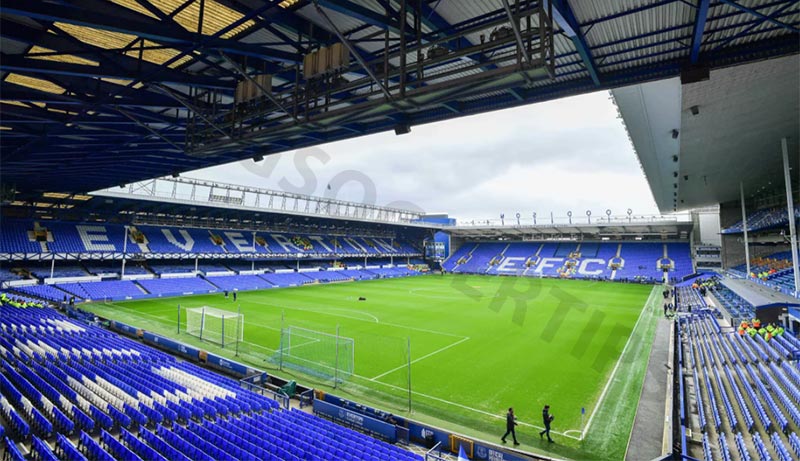
Despite its current capacity of nearly 40,000, Goodison Park still maintains a warm and traditional atmosphere. With its historic stands and dedicated fan zones, the stadium has become a symbol of the close relationship between Everton and its fanbase. Although Everton are planning to move to a more modern stadium, Goodison Park will forever be an integral part of English football history.
6. Villa Park (Anh – 1897)
Villa Park, opened in 1897 in Birmingham, is the home of Aston Villa and one of the oldest stadiums in England. This stadium, with a capacity exceeding 42,000, is renowned for its unique architecture and storied past. The stadium has hosted numerous FA Cup semi-finals and international matches, cementing its place as a major sporting event.
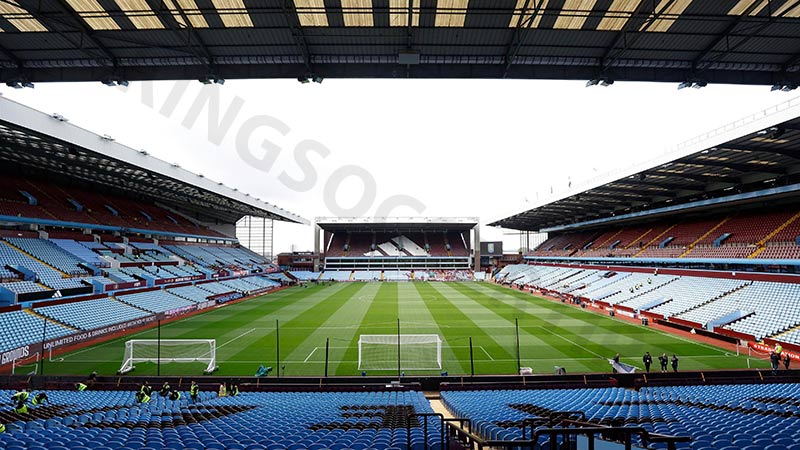
More than just a football stadium, Villa Park is a cultural icon of Birmingham. The Holte End, with its electric atmosphere and passionate support from Aston Villa fans, is a memorable highlight. The stadium is also associated with some of Aston Villa’s most celebrated moments, including the 1982 European Cup win. For the people of Birmingham, Villa Park is the heart of the city’s footballing scene, a place that has held great memories for generations.
7. Craven Cottage (Anh – 1896)
Craven Cottage, located on the banks of the River Thames in London, was inaugurated in 1896 and is the home ground of Fulham FC. The stadium stands out for its unique beauty and ancient architecture, especially the main stand designed by famous architect Archibald Leitch. Craven Cottage is more than just a football stadium; it stands as a cultural symbol of London football, drawing supporters from across the globe.
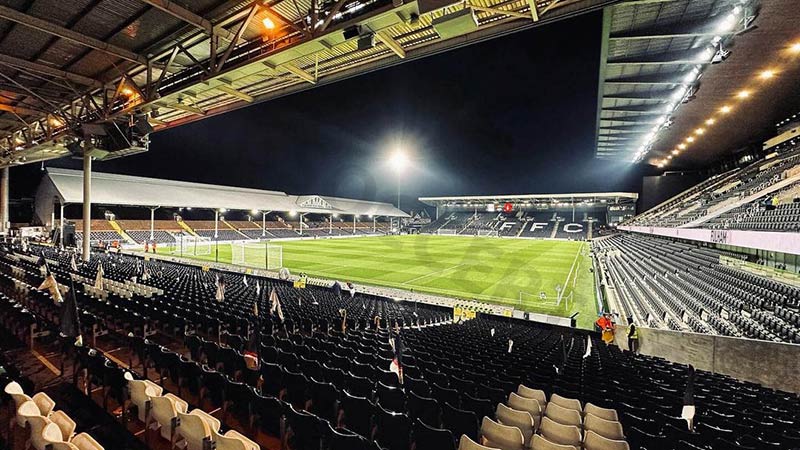
Craven Cottage, with a seating capacity just above 22,000, is renowned for its welcoming and cozy atmosphere. The stadium has witnessed the development of Fulham over the decades, from the early days to Premier League matches. Craven Cottage brings a nostalgic feeling, a favorite destination for football fans passionate about tradition and history.
8. Ibrox Stadium (Scotland – 1899)
Ibrox Stadium, opened in 1899, is the home of Rangers FC, one of Scotland’s two biggest football clubs. Situated in Glasgow, the stadium boasts a capacity of more than 50,000 and combines traditional elements with contemporary design. Ibrox is not only the venue for Rangers’ key matches, but also the centre of Scotland’s passionate fan community.
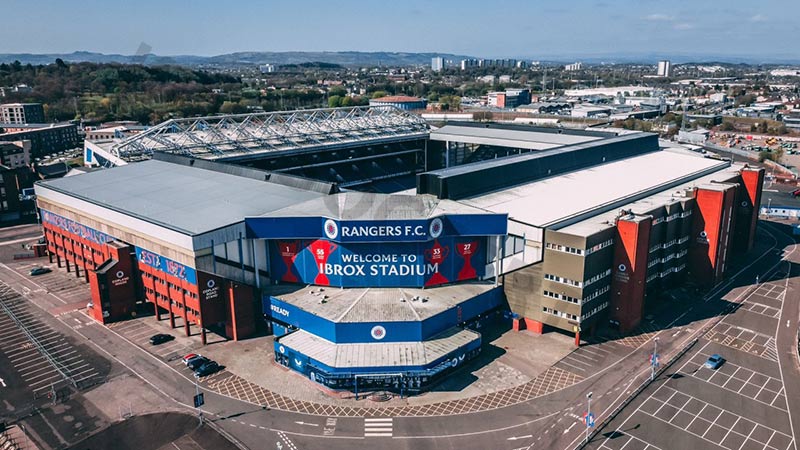
Throughout its history, Ibrox Stadium has undergone several renovations to improve safety and the spectator experience, most notably following the Ibrox tragedy of 1971. The stadium is renowned for its lively ambiance and the deep loyalty of its fans. It is more than just a football stadium, it is a symbol of Glasgow’s sporting spirit and pride.
9. Old Trafford (Anh – 1910)
Old Trafford, opened in 1910, is the home of Manchester United and one of the most famous stadiums in the world. Known as the ‘Theatre of Dreams’, Old Trafford has witnessed countless legendary moments for the club, from Sir Matt Busby to Sir Alex Ferguson. It is also the largest football stadium in England, with a capacity of over 74,000.
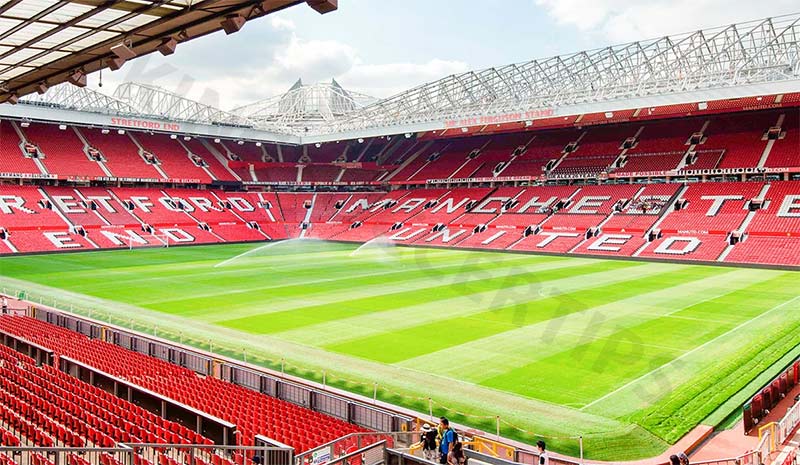
Old Trafford has undergone numerous renovations to maintain its leading position in modern football while still preserving its traditional values. In addition to football matches, the stadium also hosts many cultural and sporting events, affirming its important role not only in football but also in the Manchester community. For Manchester United fans, Old Trafford is more than just a stadium, it is a symbol of greatness and loyalty.
10. Stamford Bridge (England – 1877)
Stamford Bridge, opened in 1877, is the home of Chelsea FC in London. Originally designed to host a variety of sporting events, Stamford Bridge became a dedicated football stadium in 1905 and saw the birth of Chelsea FC. With a history spanning nearly 150 years, the stadium is one of the traditional symbols of English football.
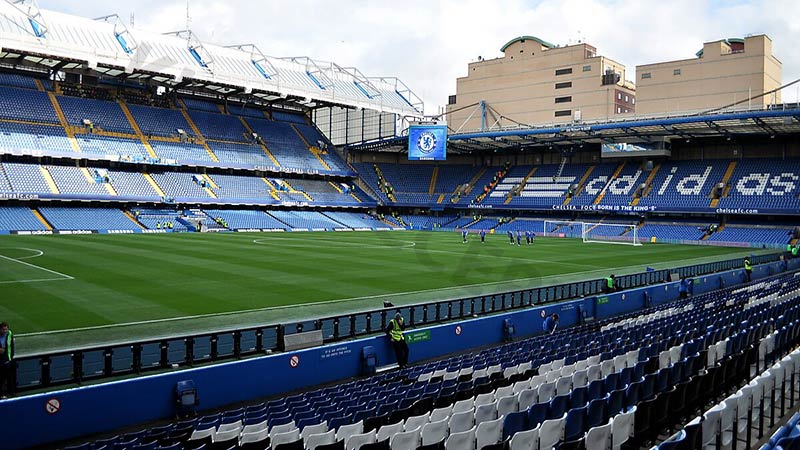
Today, Stamford Bridge has a capacity of over 40,000 people and stands out for its central location in London. In addition to hosting important Chelsea matches, the stadium also attracts visitors through its football museum and tours. Combining traditional and modern elements, Stamford Bridge is a symbol of London football and the pride of Chelsea fans.
Conclusion
Looking back at the list of the 10 oldest football stadium in the world, we not only witness the architectural works associated with the history of the king sport, but also feel the spirit and passion of millions of fans across generations. From Sandygate Road, the birthplace of football, to icons like Old Trafford and Stamford Bridge, each stadium tells its own story about the development of football and local culture. These stadiums are not only the places where matches take place but also “witnesses” to legendary moments, unforgettable memories and the borderless connections that football brings. These are truly precious legacies, contributing to enriching the identity of the most beloved sport in the world.
See more: Summary of 10 best goal save ever in football history
